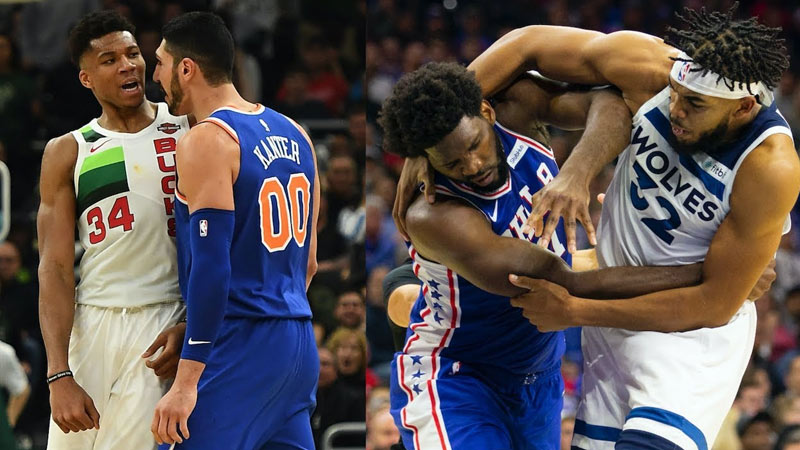Basketball is an intense and fast-paced sport that often involves physical contact between players. With the objective of scoring points, players employ various strategies to gain an advantage. However, there are rules in place to ensure fair play and maintain player safety.
Fouls play a crucial role in regulating the game and penalizing players for illegal actions. In this blog post, we will explore different types of fouls in basketball, their descriptions, penalties, and the situations in which they occur.
These fouls not only enhance our knowledge of the game but also helps us appreciate the importance of sportsmanship and adherence to the rules.
15 Different Types of Fouls in Basketball
Here are all the basic details of all popular fouls in basketball:
1. Personal foul
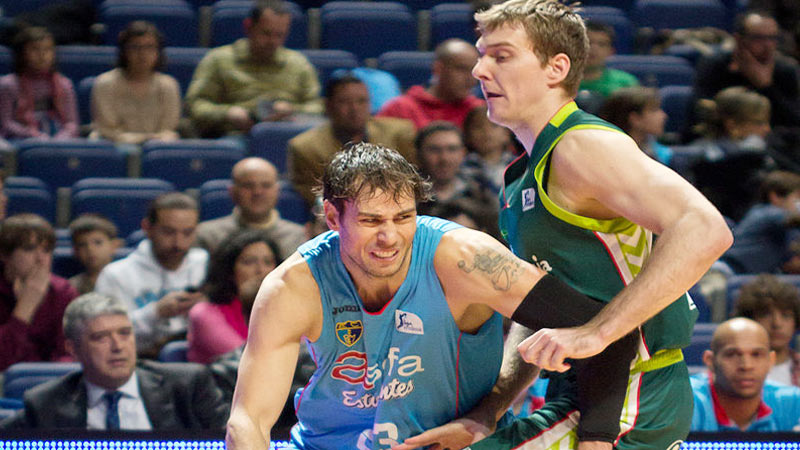
Source: wikipedia.org
A personal foul is a common type of foul in basketball. It occurs when a player makes illegal physical contact with an opponent. This can include pushing, holding, hitting, or any other action that impedes the opponent’s ability to play.
Personal fouls can be committed on both offense and defense. Penalties for personal fouls vary depending on the situation.
In most cases, the fouled player is awarded free throws. If the fouled player was in the act of shooting and the shot was unsuccessful, they are awarded two or three free throws, depending on the location of the shot. If the shot was successful, one free throw is awarded. Additionally, if a player accumulates a certain number of personal fouls, they may be ejected from the game.
2. Technical foul
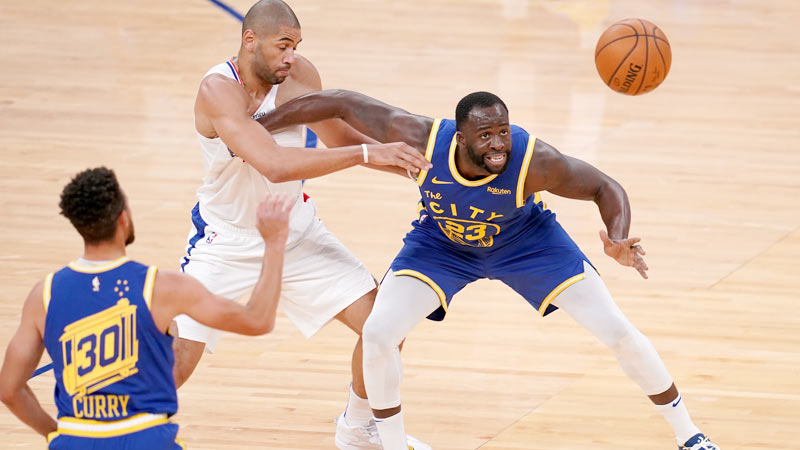
Source: rappler.com
A technical foul is a penalty given for unsportsmanlike behavior by players, coaches, or bench personnel. It includes actions such as arguing with officials, using foul language, or displaying excessive aggression. Technical fouls do not involve physical contact with an opponent.
The penalties for technical fouls usually result in the opposing team being awarded free throws or possession of the ball. Typically, one free throw is awarded, and the opposing team retains possession of the ball.
3. Flagrant foul
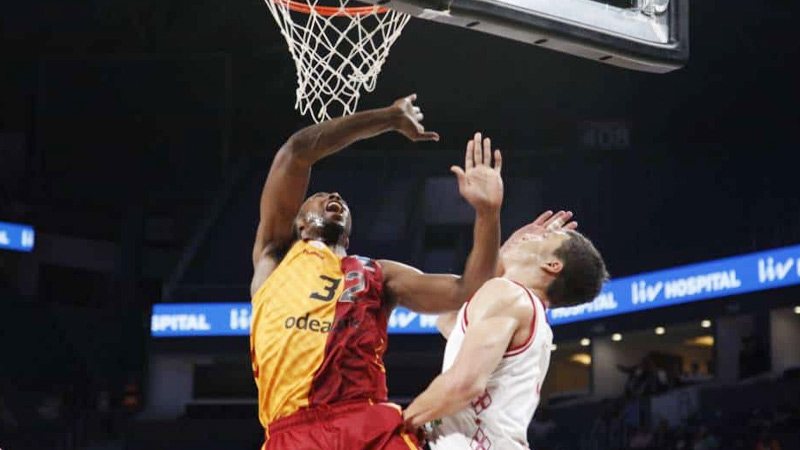
Source: coachingkidz.com
A flagrant foul is a severe infraction that involves excessive or unnecessary contact. It is usually characterized by violent or dangerous actions that go beyond the normal scope of the game.
Examples of flagrant fouls include striking an opponent in the head, making unnecessary and excessive contact during a play, or using excessive force to block a shot.
Flagrant fouls carry severe penalties, often resulting in ejection from the game. The fouled team is usually awarded free throws and possession of the ball.
4. Shooting foul
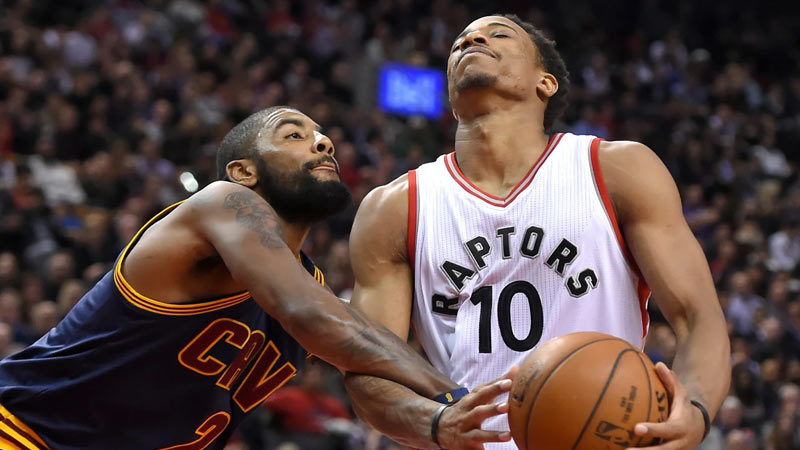
Source: hoopshype.com
A shooting foul occurs when a defensive player makes illegal contact with an offensive player in the act of shooting. It can include actions like hitting the shooter’s arm or body, impeding their shooting motion, or making contact after the shot attempt.
Shooting fouls can result in free throws for the offensive player, depending on the circumstances of the shot. The penalties for shooting fouls vary based on the location of the shot and whether it was successful.
If the shot was unsuccessful, the offensive player is usually awarded two or three free throws, depending on whether it was a two-point or three-point attempt. If the shot was successful, one free throw is awarded.
5. Charging foul
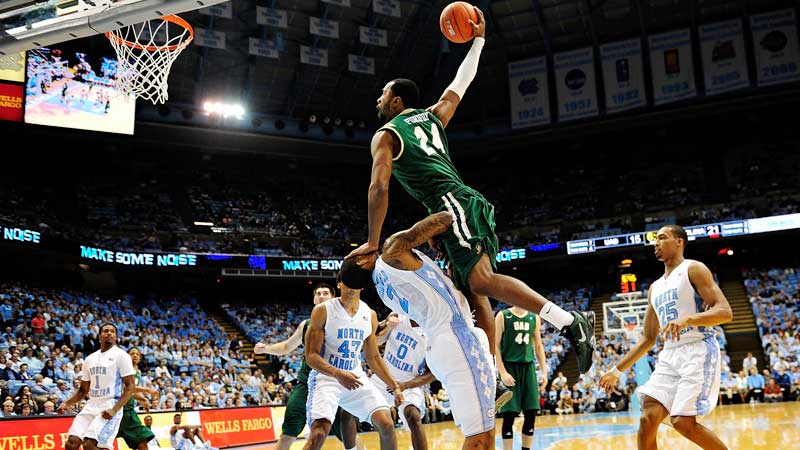
Source: bleacherreport.com
A charging foul is a common foul in basketball that occurs when an offensive player with the ball makes contact with a defensive player who has established a legal defensive position.
The defensive player must be stationary and outside of the restricted area to draw a charging foul. It often happens when an offensive player initiates contact by driving into the defender. The charging foul is called to prevent offensive players from bulldozing their way to the basket without regard for defensive positioning.
When a charging foul is called, the offensive team loses possession of the ball, and the opposing team gains possession. It rewards good defensive positioning and discourages reckless offensive drives.
6. Blocking foul
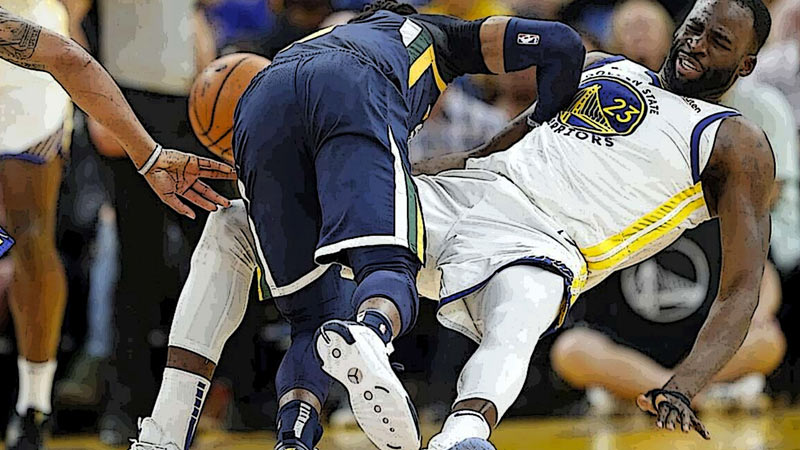
Source: gaimday.com
In contrast to a charging foul, a blocking foul is called when a defensive player is moving or not in a legal defensive position and makes contact with an offensive player. The defensive player must establish position and be stationary before contact to draw an offensive foul.
Blocking fouls usually occur when a defender is not properly set or is still in motion while trying to impede the offensive player’s progress. When a blocking foul is called, the offensive player is typically awarded free throws if they were in the act of shooting. Otherwise, the offensive team retains possession of the ball.
Blocking fouls often lead to debates and judgments on whether the defender was in a legal position or not, as the call depends on the timing and positioning of both players.
7. Loose ball foul
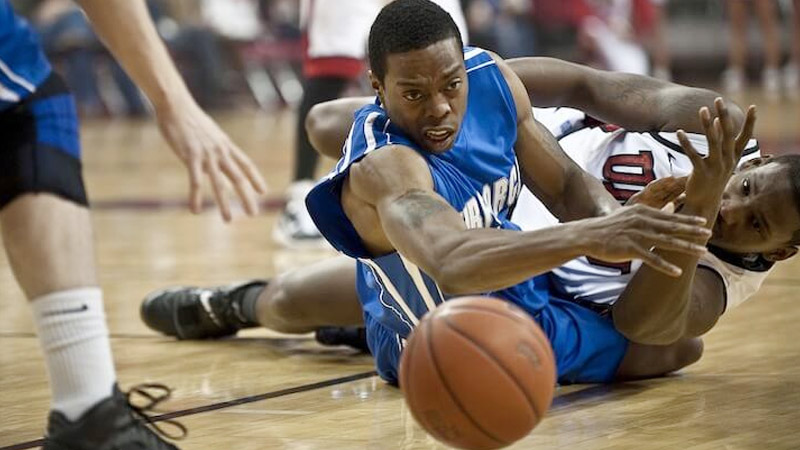
Source: basketballforcoaches.com
A loose ball foul is called when there is a foul committed by a player while the ball is not in the possession of either team. It often occurs during rebounding situations or when players are trying to gain control of a loose ball.
Examples of loose ball fouls include grabbing, holding, or pushing opponents to gain an advantage in securing the ball. Loose ball fouls can disrupt the flow of the game and are typically penalized by awarding possession of the ball to the opposing team.
Players must exercise caution and refrain from engaging in unnecessary contact during loose ball situations to avoid committing these fouls.
8. Offensive foul
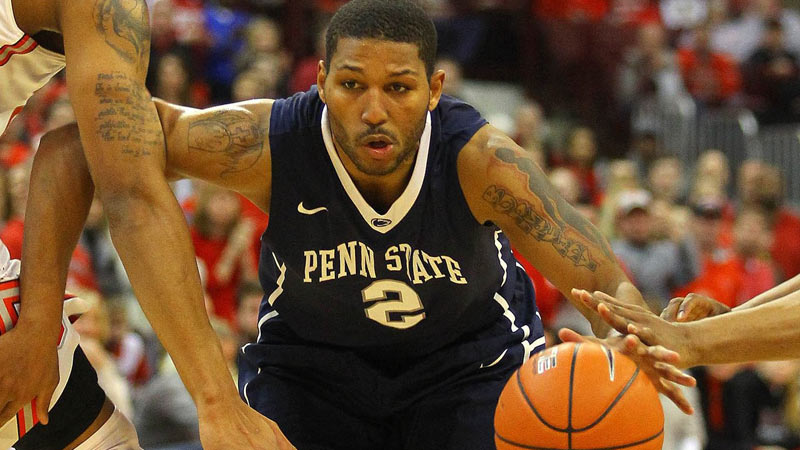
Source: sbnation.com
An offensive foul is committed by an offensive player when they violate the rules while in possession of the ball. It includes actions such as charging into a defender, pushing off to create space, or using excessive physicality to gain an advantage.
Offensive fouls often occur when players are trying to create scoring opportunities by driving to the basket or posting up. When an offensive foul is called, the offensive team loses possession of the ball, and the opposing team gains possession.
Offensive fouls highlight the importance of fair play and discourage offensive players from using unfair tactics to gain an advantage.
9. Double foul
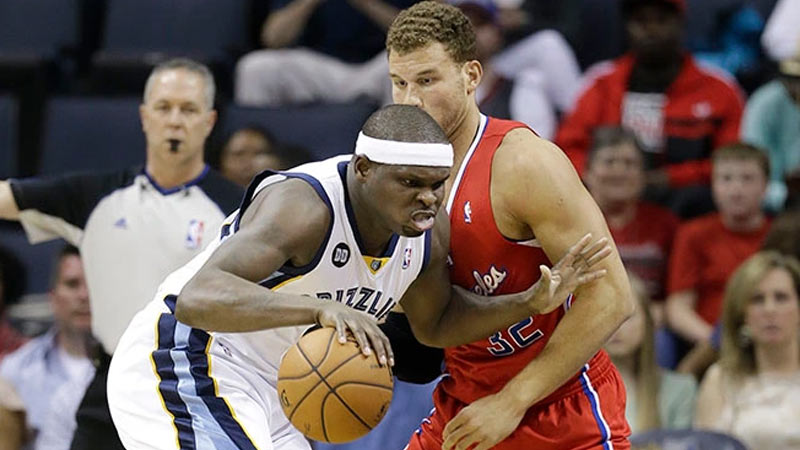
Source: ftw.usatoday.com
A double foul occurs when two opposing players commit fouls against each other at the same time or in quick succession. It often happens during physical or confrontational plays where both players are involved in illegal contact.
The purpose of calling a double foul is to maintain fairness and prevent one player from being solely penalized for the altercation.
In the case of a double foul, no free throws are awarded, and the play is usually replayed. It serves as a way to defuse tense situations and ensures that both players are held accountable for their actions.
10. Unsportsmanlike foul
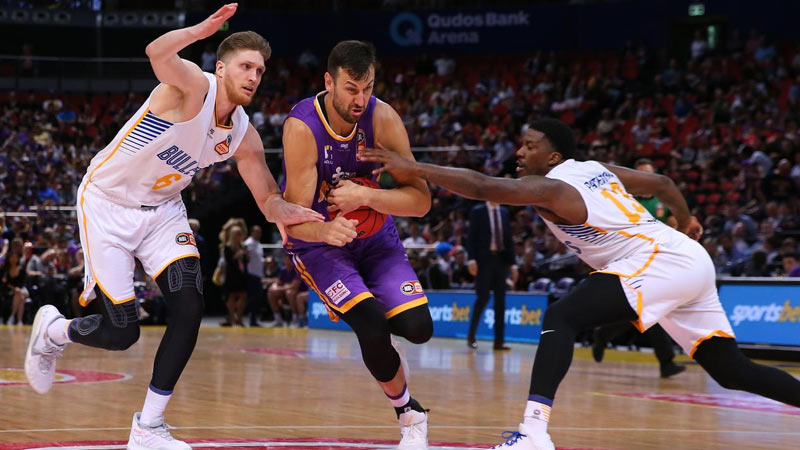
Source: dailytelegraph.com
An unsportsmanlike foul is a type of foul in basketball that is called for conduct deemed unsportsmanlike or detrimental to the game. It involves actions such as taunting, trash-talking, or intentionally trying to injure an opponent.
Unsportsmanlike fouls go beyond the normal physical contact of the game and reflect a lack of respect for the rules and opponents. The penalties for an unsportsmanlike foul are significant. They typically result in free throws for the opposing team and possession of the ball. The severity of the penalty may vary depending on the specific actions involved.
In some cases, repeated unsportsmanlike fouls can lead to ejection from the game. Unsportsmanlike fouls not only disrupt the flow of the game but also undermine the principles of fair play and respect. They are considered detrimental to the spirit of basketball and are heavily discouraged to maintain a positive and sportsmanlike environment on the court.
11. Traveling violation
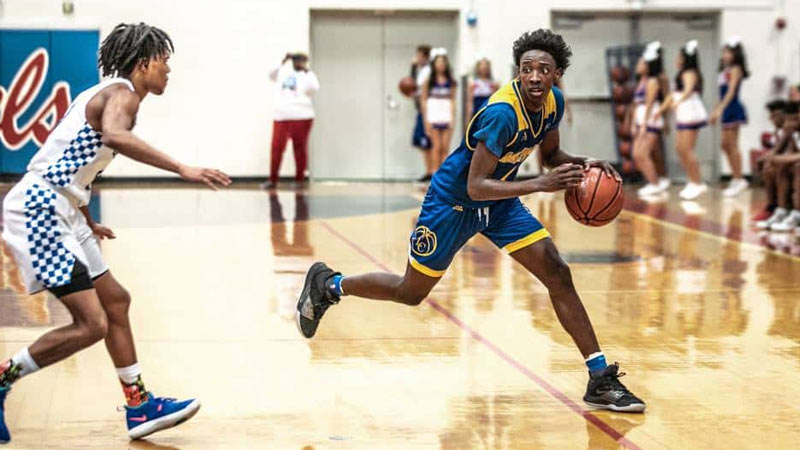
Source: coachingkidz.com
A traveling violation occurs when a player in possession of the ball moves illegally without dribbling or establishes a pivot foot and then moves it illegally.
It typically happens when a player takes more than the allowed number of steps without dribbling or shuffling their feet before releasing the ball. When a traveling violation is called, the opposing team gains possession of the ball.
Traveling violations prevent players from gaining an unfair advantage by taking excessive steps or altering their pivot foot position improperly. They ensure that players adhere to the footwork rules and maintain a level playing field.
12. Palming violation
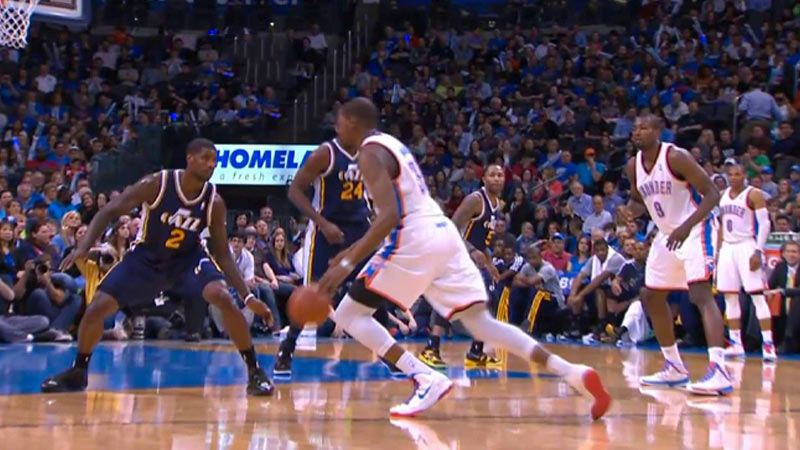
A palming violation, also known as a carrying violation, occurs when a player dribbles the ball by allowing it to come to rest in their hand, rather than maintaining continuous control while dribbling.
It typically happens when a player’s hand is under the ball while dribbling, resulting in a momentary pause in the dribbling action. When a palming violation is called, the opposing team gains possession of the ball.
Palming violations prevent players from gaining an unfair advantage by manipulating the ball improperly during dribbling. They ensure that players maintain a consistent and controlled dribbling technique.
13. 3-second violation
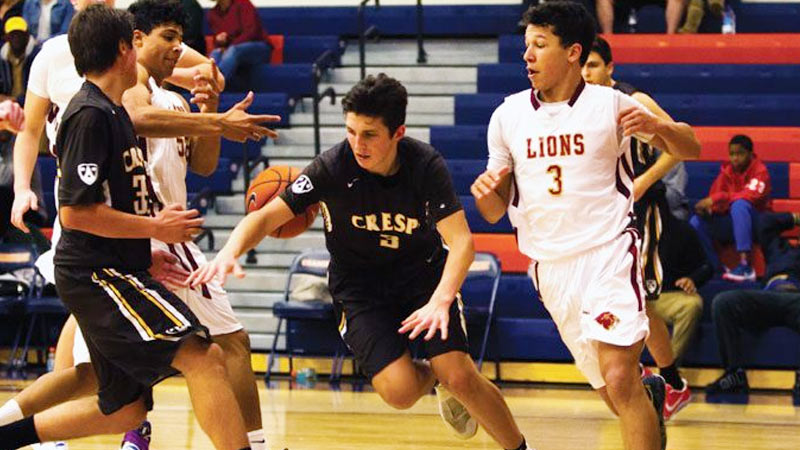
Source: referee.com
A 3-second violation in basketball occurs when an offensive player remains in the opposing team’s key or paint area for more than three seconds continuously without actively participating in the play.
This rule is in place to prevent offensive players from camping in the key and clogging up the paint. When a 3-second violation is called, the opposing team gains possession of the ball.
This violation ensures fair play by encouraging offensive players to move and not excessively occupy the key, promoting continuous flow and spacing on the court.
15. 5-second violation
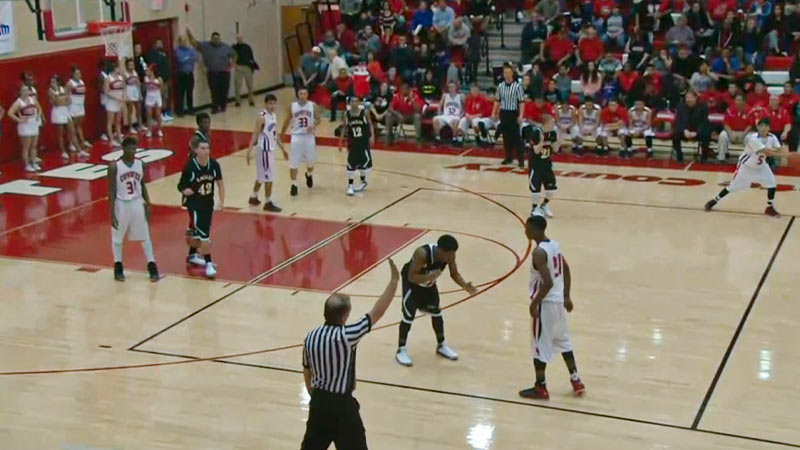
A 5-second violation in basketball is called on an offensive player who is closely guarded and does not attempt to pass, shoot, or dribble within five seconds.
It is designed to prevent players from holding the ball for an extended period without making a decisive move. When a 5-second violation is called, the opposing team gains possession of the ball.
This violation encourages offensive players to make timely decisions and discourages stalling tactics that can slow down the game.
16. 24-second violation
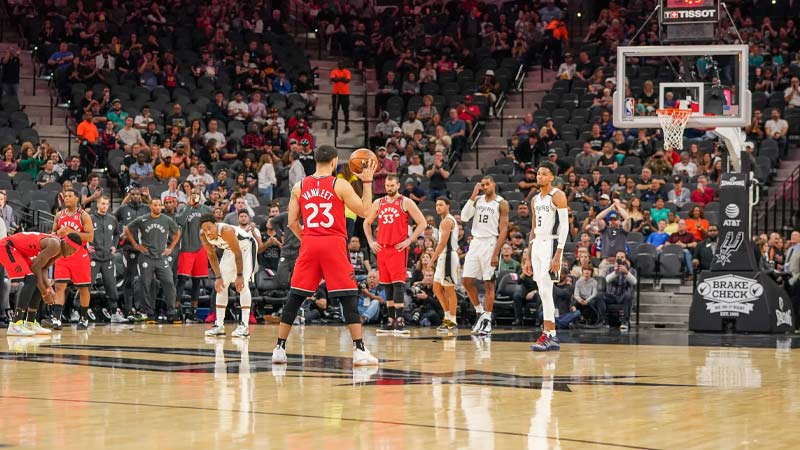
Source: usatoday.com
A 24-second violation is specific to professional basketball and occurs when the offensive team fails to attempt a shot that hits the rim within 24 seconds of gaining possession of the ball.
This shot clock violation is in place to ensure that teams do not excessively delay their offensive plays. When a 24-second violation is called, the opposing team gains possession of the ball.
This violation ensures that the game maintains a fast pace and prevents teams from deliberately wasting time without attempting to score. It encourages offensive efficiency and keeps the game engaging for players and fans alike.
FAQs
What is the difference between a personal foul and a technical foul?
A personal foul occurs when a player makes illegal physical contact with an opponent, whereas a technical foul is a penalty for unsportsmanlike behavior by players, coaches, or bench personnel.
Personal fouls involve physical contact, while technical fouls encompass actions such as arguing with officials or displaying excessive aggression without physical contact.
What is a flagrant foul, and how is it different from other fouls?
A flagrant foul is a severe infraction that involves excessive or unnecessary contact, often characterized by violent or dangerous actions.
Unlike other fouls, flagrant fouls go beyond the normal scope of the game and pose a significant risk to players’ safety. They carry severe penalties, including potential ejection from the game.
What happens when a shooting foul is called?
A shooting foul occurs when a defensive player makes illegal contact with an offensive player in the act of shooting.
The penalties vary based on the shot’s success. If the shot is unsuccessful, the offensive player is usually awarded two or three free throws. If the shot is successful, one free throw is awarded.
How are charging and blocking fouls different?
A charging foul is called when an offensive player with the ball makes contact with a defensive player who has established a legal defensive position. In contrast, a blocking foul occurs when a defensive player is moving or not in a legal defensive position and makes contact with an offensive player.
Charging fouls involve offensive players initiating contact while blocking fouls typically result from defensive players’ improper positioning.
What are some common violations related to fouls?
In addition to fouls, basketball has various rule violations. A traveling violation occurs when a player takes more than the allowed number of steps without dribbling. Palming violation refers to dribbling the ball by allowing it to come to rest in the hand.
Other violations include 3-second violations, 5-second violations, and 24-second violations, which regulate offensive players’ presence, inbounding time, and shot clock usage, respectively.
Wrapping Up
Fouls are an integral part of basketball, ensuring fair play and maintaining the game’s integrity. From personal fouls that involve physical contact to technical fouls for unsportsmanlike behavior, each infraction has its own set of penalties.
Understanding the different types of fouls and their implications helps players, coaches, and fans appreciate the importance of following the rules. Moreover, violations related to fouls, such as traveling or palming violations, further emphasize the need for players to adhere to proper techniques and footwork.
By promoting sportsmanship and upholding the spirit of the game, a solid understanding of fouls contributes to a thrilling and enjoyable basketball experience for everyone involved. Have a nice day.

